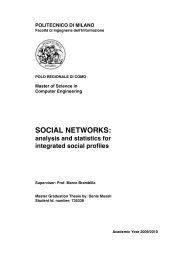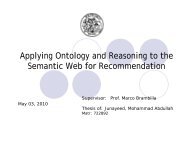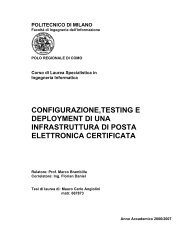Thesis full text (PDF) - Politecnico di Milano
Thesis full text (PDF) - Politecnico di Milano
Thesis full text (PDF) - Politecnico di Milano
You also want an ePaper? Increase the reach of your titles
YUMPU automatically turns print PDFs into web optimized ePapers that Google loves.
etrieves the properties by their car<strong>di</strong>nality values, PropertyIsDatatypeProperty retrieves the<br />
properties of data values, and PropertyIsObjectProperty retrieves the properties of objects.<br />
Figure 3.4: Property Component<br />
3.1.4 Hierarchy Components<br />
The Hierarchy components explore the inclusion axioms in the knowledge base regar<strong>di</strong>ng<br />
hierarchies of UML classes or properties, and to deduct the taxonomy defined upon them. If no<br />
selection con<strong>di</strong>tion is specified, they extract the complete taxonomy. Otherwise, they retrieve the<br />
elements in the knowledge base (classes or properties) satisfying the correspon<strong>di</strong>ng inclusion<br />
assertions.<br />
The selection con<strong>di</strong>tions for the Classes Hierarchy Component are the following: the<br />
DirectSuperClass and SuperClass for extraction of the <strong>di</strong>rect superclass (father) or all the<br />
superclasses (ancestors) of the given classes; the DirectSubClass and SubClass for extraction of<br />
the <strong>di</strong>rect subclass (child) or all subclasses (descendants) of the given classes; the<br />
MostGenericClass and MostSpecificClass for retrieving the most generic or the most specific<br />
classes in the hierarchy. A combination of the previous con<strong>di</strong>tions extracts the hierarchy<br />
31


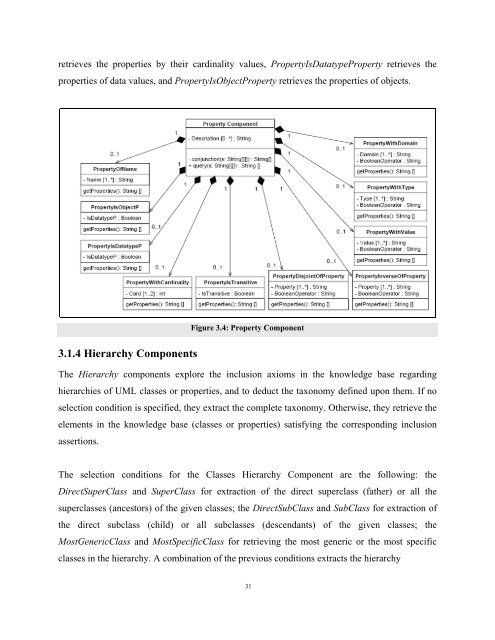
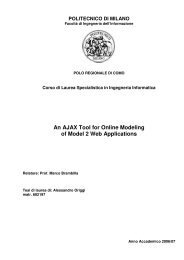
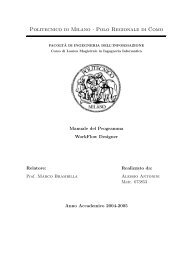
![Full text preview of the chapter [PDF] - Politecnico di Milano](https://img.yumpu.com/44021924/1/180x260/full-text-preview-of-the-chapter-pdf-politecnico-di-milano.jpg?quality=85)
